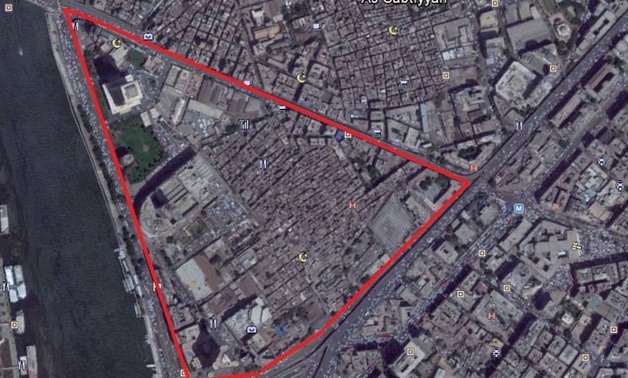
The slums surrounding Maspero - Maspero Triangle Development Association
CAIRO – 14 August 2018: The Maspero Triangle Development project is progressing so well, and about 75% of the area has been already demolished, Khalil Shaath, head of the development of slums department in Cairo governorate, said on Monday.
Prime Minister and Minister of Housing, Utilities and Urban Communities, Mostafa Madbouly, witnessed on July 9 the signing ceremony of two cooperation protocols between Cairo governorate and the new Urban Communities Authority.
The agreements aim to transfer the ownership of a 5.5-feddan area in Maspero Triangle to the authority to build new housing units and provide the necessary services for the residents.
Maspero triangle’s residents were asked to choose between financial compensation, relocation to Asmarat or to remain in their homes until development finished. Ten percent chose to more to Asmarat and another 10 percent to remain in their place until development works are finished. Eighty percent chose to receive financial compensation.
Tenants of non-residential areas had four options. The first option was to receive 30 percent of the value of the land. The second is to move to another area in addition to getting a residential unit for rent in Badr city. The third option offered a new unit when the project is over. The fourth option is ownership of a residential unit in Asmarat.
The project is a part of an initiative launched in 2014 to develop slum areas all over Egypt.

Tahya Misr residential complex (Al-Asmarat district)
The Maspero triangle was given its name because of its triangle shape on the map. The area covers 74 feddans (77 acres) and is home to at least 18,000 residents, according to 2014 estimates by Madd platform, an independent urban development institution.
The Ministry of Housing estimates that 40 percent of the population of Cairo lives in informal settlements, while the Informal Settlements Development Fund (ISDF), now part of the new Ministry for Urban Development, estimates that 75 percent of urban areas throughout Egypt isunplanned and 1 percent isunsafe.
Hence, President Abdel Fatah al-Sisi has sought to tackle housing problems in Egypt, and a plan was set to develop many unsafe areas in Cairo, which has the majority of Egypt’s slums, and to re-house residents of Egypt’s most dangerous slums. The government divided the slums into two categories. The first is the dangerous slums;thegovernment pledged to eliminate dangerous slums by the end of2018.
In May 2016, President Sisi promised to move all those living in slums to new flats over three years as part of an ambitious project expected to cost about LE 14 billion ($790 million).
In the same context, the Tahya Misr (Long Live Egypt) Fund, launched by Sisi in 2014, has been working on a three-phase strategy to eliminate Egypt’s shantytowns and re-house slum residents, including those living in Doueyka, Establ Antar and Ezbet Khair Allah. The project includes 15,000 housing units to re-house 60,000 slum residents. The first two phases of Tahya Misr are comprised of 12,000 flats. The third phase opened in 2017 and is comprised of 20,000 flats.

Comments
Leave a Comment